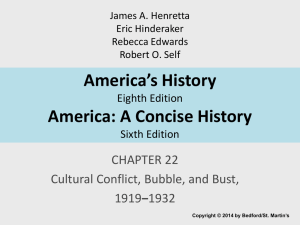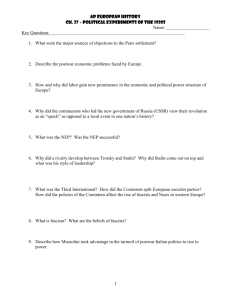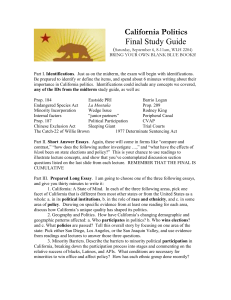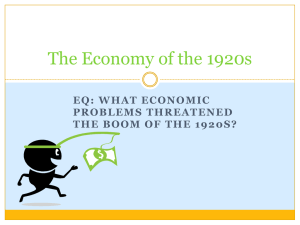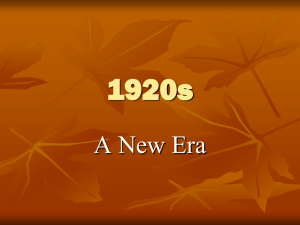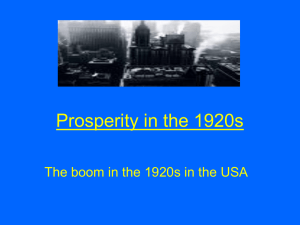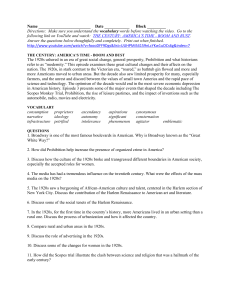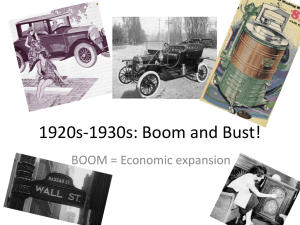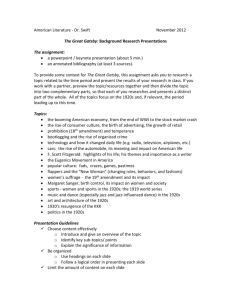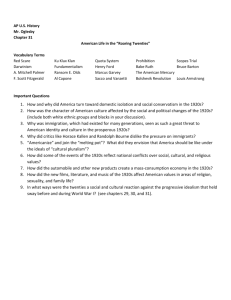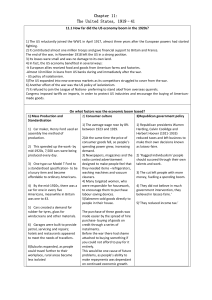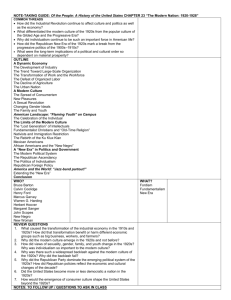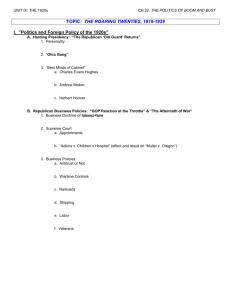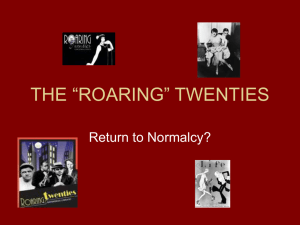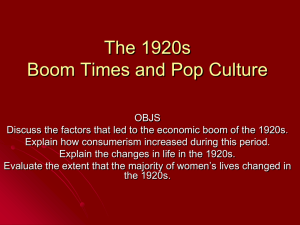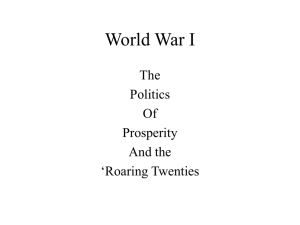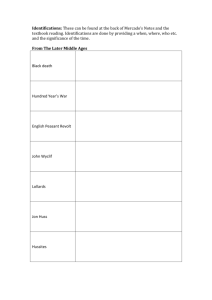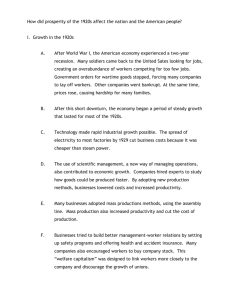Chapter 22 GQ-ID
advertisement
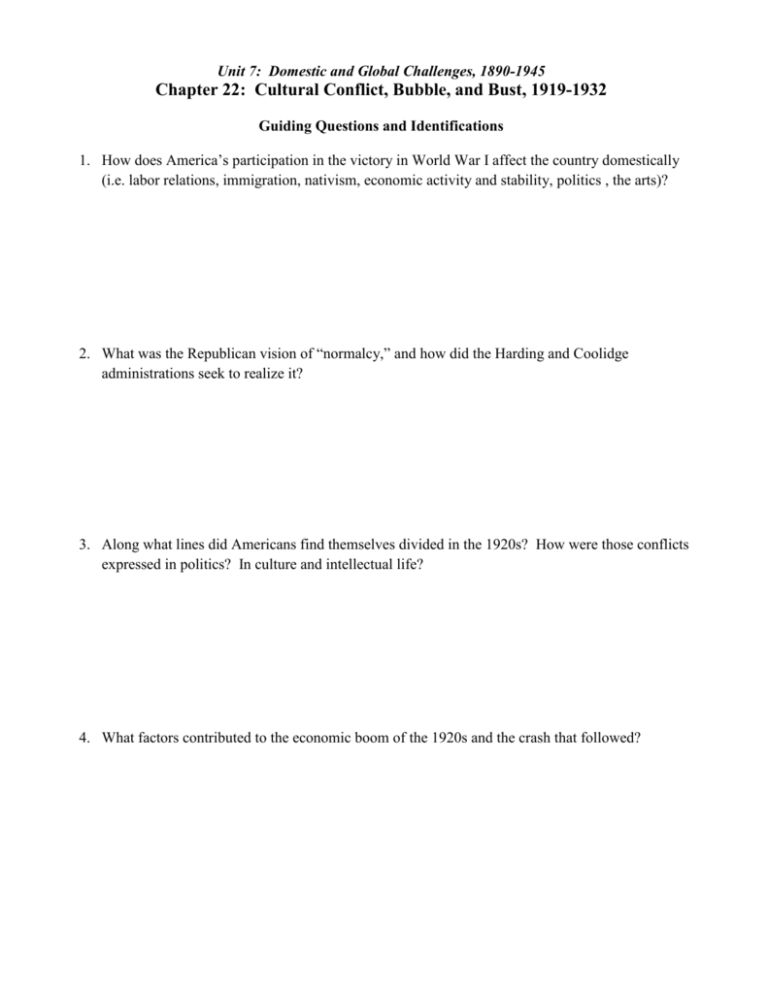
Unit 7: Domestic and Global Challenges, 1890-1945 Chapter 22: Cultural Conflict, Bubble, and Bust, 1919-1932 Guiding Questions and Identifications 1. How does America’s participation in the victory in World War I affect the country domestically (i.e. labor relations, immigration, nativism, economic activity and stability, politics , the arts)? 2. What was the Republican vision of “normalcy,” and how did the Harding and Coolidge administrations seek to realize it? 3. Along what lines did Americans find themselves divided in the 1920s? How were those conflicts expressed in politics? In culture and intellectual life? 4. What factors contributed to the economic boom of the 1920s and the crash that followed? Identifications: 22.1 Conflicted Legacies of World War I Adkins v. Children’s Hospital welfare capitalism A. Mitchell Palmer & the Palmer raids Red Scare Sacco and Vanzetti 22.2 Politics in the 1920s Sheppard-Towner Federal Maternity and Infancy Act Women’s International League for Peace and Freedom associated state concept Teapot Dome scandal “dollar diplomacy” Prohibition American Civil Liberties Union Scopes trial National Origins Act Ku Klux Klan Birth of a Nation Henry Ford and his views on Judaism 22.3 Intellectual Modernism Harlem Renaissance Langston Hughes Zora Neale Hurston Louis Armstrong Universal Negro Improvement Association Marcus Garvey pan-Africanism Lost Generation 22.4 From Boom to Bust consumer credit Hollywood Adolph Zukor flapper soft power
